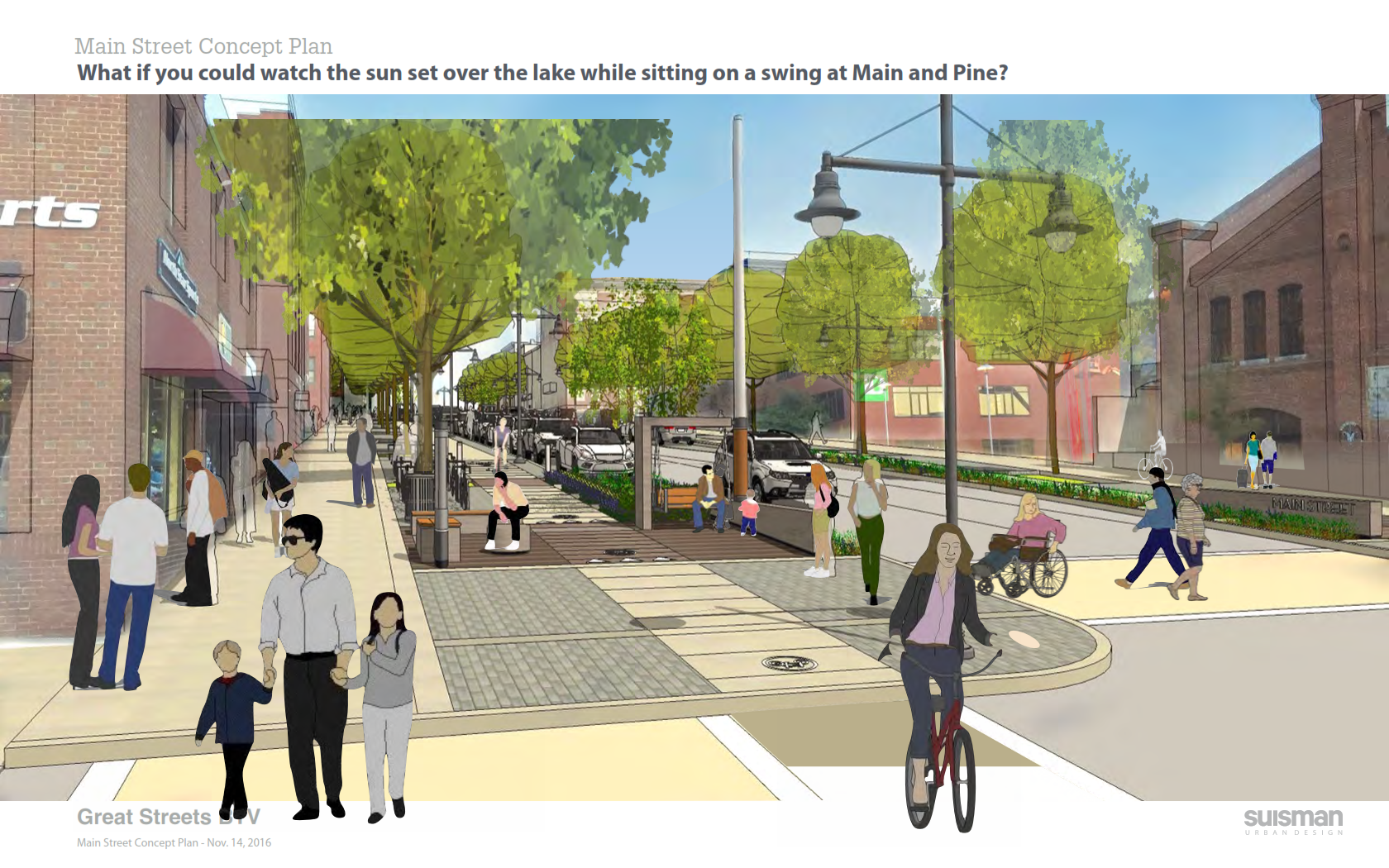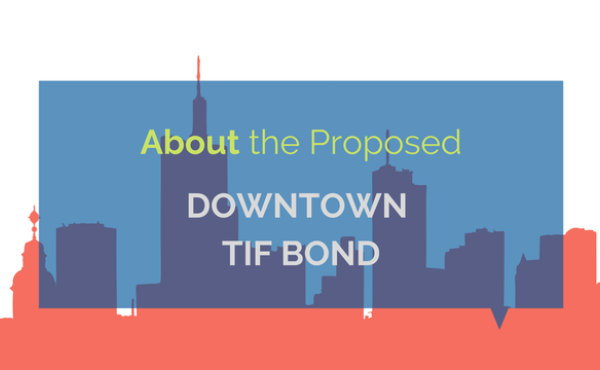

Frequently Asked Questions
Main Street TIF FAQ
How much is the proposed TIF bond?
What will the TIF bond be used for?
The City proposes to use the funds for the Main Street “Great Streets” project and the “ravine sewer” project.
Main Street “Great Streets”
The Main Street upgrades will meet the Great Streets standards that were adopted by the City Council in April 2018. The work will begin with underground utilities being upgraded, extended, relocated, and reconstructed, as needed. But Great Streets is so much more than that. Great Streets will create a far more livable environment along Main Street designed to focus on people while still accommodating cars. It will incorporate environmental benefits such as rain gardens to pre-treat stormwater runoff. Bicycle lanes will create safer and more inviting travel for cyclists. Wider sidewalks with street trees, street furniture and other landscaping will create an appealing environment for pedestrians.
Ravine Sewer
The ravine sewer is a very large and very deep stormwater sewer line that runs through an old ravine that bisects the City-owned parking lot at the corner of Main and Winooski Ave. It then passes under Main Street as it continues generally south-west. It was built beginning in the 1860s, more than 150 years ago!
Why is the City proposing this work?
What is TIF and How does it Work?
Tax Increment Financing (TIF) is an economic development tool designed to foster the types of development Vermont has been encouraging for years, in the places we want it to occur – downtowns, industrial parks, and compact village centers.
TIF allows local governments to invest in public infrastructure and other improvements up-front. Local governments can then pay later for those investments by capturing the future anticipated increase in tax revenues generated by the project to pay back the bond. TIF is designed to have tax increment revenue fund improvements, not increase taxes.
How does the municipality pay for the public infrastructure investments?
At the time a TIF district is established, the total taxable grand list value of the properties in the district is determined and is called the “Original Taxable Value” or OTV. During the life of the TIF district, all taxes generated by the OTV continue to go to the funds they have always gone to – principally the municipality’s general fund and the state education fund. Not a nickel of those dollars is taken away.
New incremental taxes generated by the new incremental grand list value created by the new private development goes to the TIF fund, but not all the new taxes. In the case of Burlington’s downtown TIF district, 100% of the new incremental municipal taxes and 75% of the state education taxes go to the TIF fund. The other 25% of the state education taxes go to the education fund.
These new incremental taxes in the TIF fund are used to pay the debt service on the money the municipality borrowed. The money in the TIF fund also pays for costs to plan and manage the construction of the public infrastructure projects, and the costs to set up and operate the TIF district. These are referred to as “Related Costs”.
Does TIF take money away from the education fund?
TIF uses only new incremental tax revenue. The core idea is that “but for” the use of TIF to make public investments the private development would not have occurred, and the tax dollars being used for TIF would not have existed. Therefore, the education fund would not have had them in the first place.
What is the purpose of TIF?
Every state that has a TIF program has its own goals and objectives for TIF. In Vermont the TIF enabling statute (Title 2VSA, Chapter 53, Sub-chapter 5, § 1893) says:
The purpose of tax increment financing districts is to provide revenues for improvements that serve the district and related costs, which will stimulate development or redevelopment within the district, provide for employment opportunities, improve and broaden the tax base, or enhance the general economic vitality of the municipality, the region, or the State.
What is the Downtown TIF District?
What has the Downtown TIF district been used for so far?
- St. Paul Street – the Great Streets improvements between Maple Street and Main Street
- Marketplace Garage repairs
- Browns Court parking brownfield cleanup
- Stormwater management upgrades on Main Street adjacent to City Hall Park
- Design work for Main Street upgrades from South Union to Battery
How is the downtown TIF doing? Is it covering its debt?
- Original Taxable Value (OTV) in the Downtown TIF District: $170 million
- Current taxable value: $279.5 million
- Incremental Value in the downtown TIF district to date: $109.5 million
- In 2015 voters approved up to $10 million bonding
- Debt incurred to date: $5,420,000 with $4,580,000 not yet borrowed
- Debt balance (as of 7/1/21) $4,565,000 (already paid off $855,000)
- TIF Fund Balance (as of 7/1/21) $1,790,524
In brief, the TIF fund has sufficient revenue to pay its debt and has a current surplus of nearly $1.8 million.
Where can I get more information?
Information regarding the Great Streets program is here:
The CEDO website includes more information on:
Downtown TIF district: https://www.burlingtonvt.gov/CEDO/Downtown-TIF-District
Tax Increment Financing: https://www.burlingtonvt.gov/CEDO/Tax-Increment-Financing